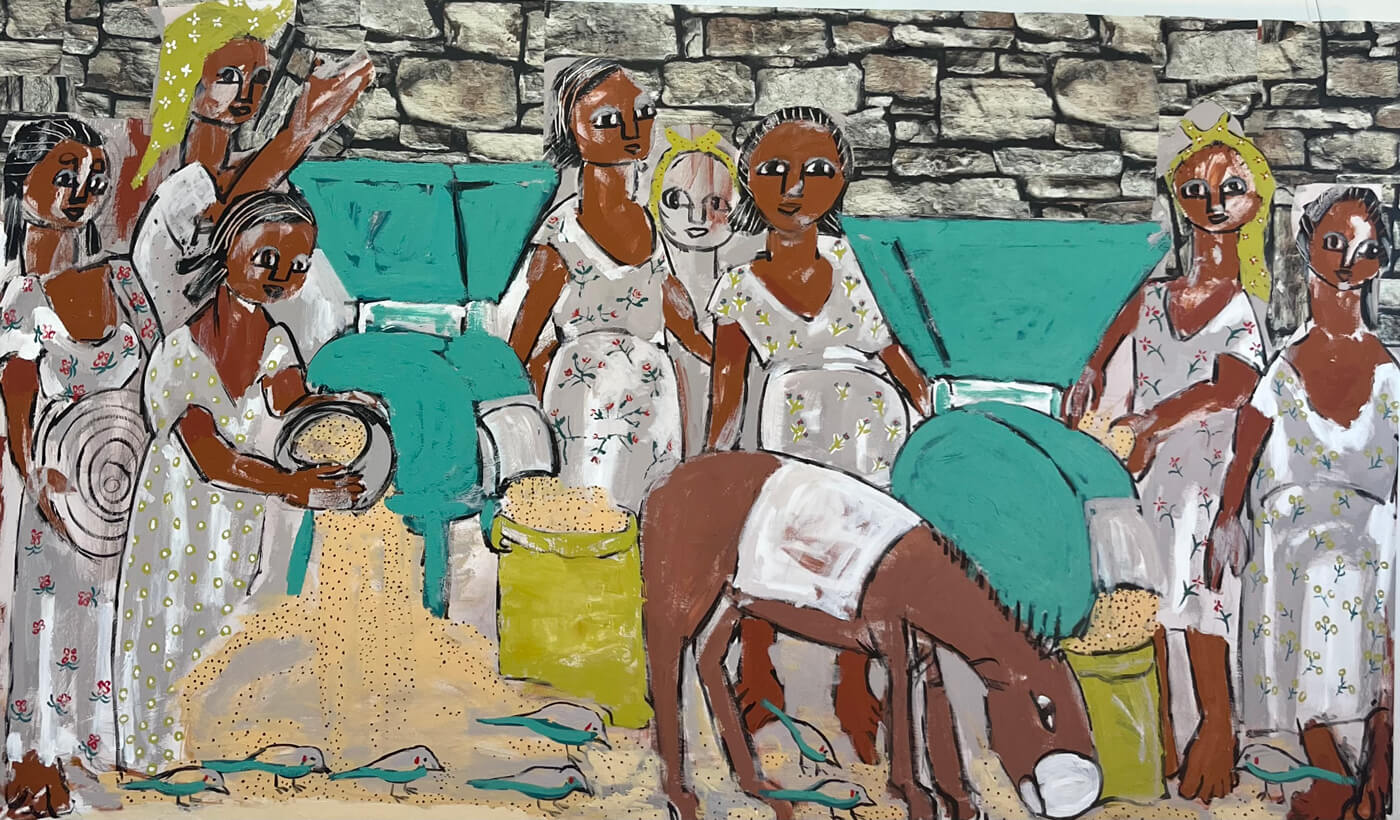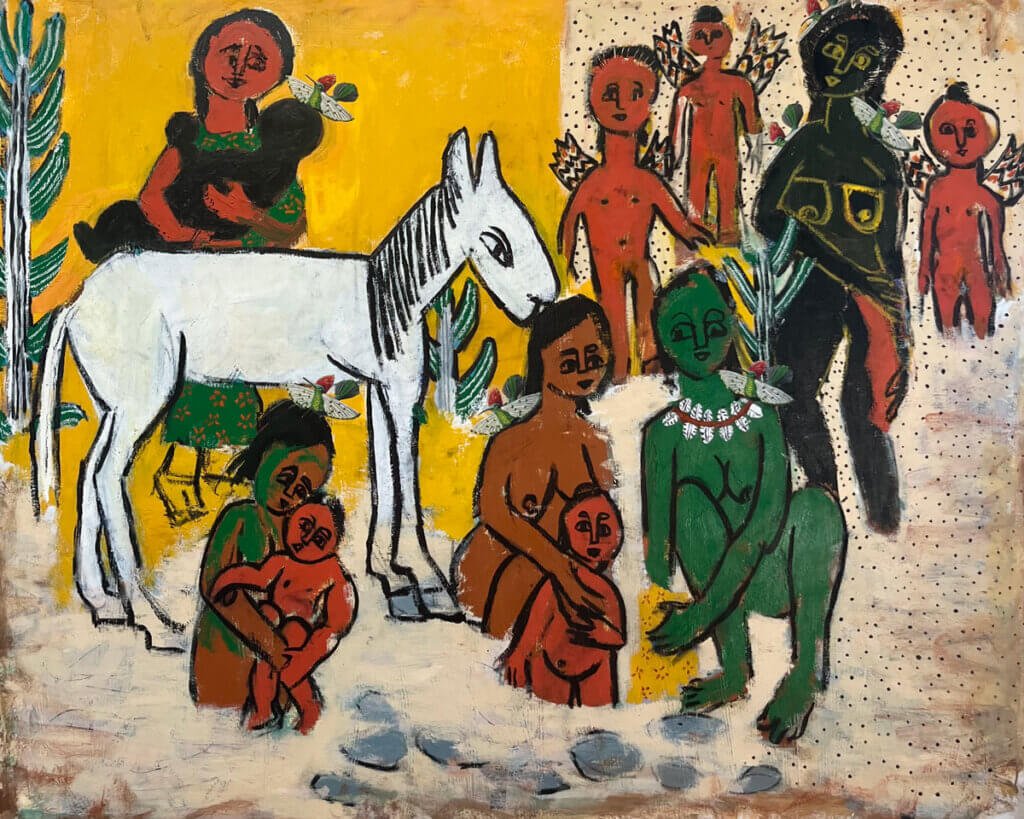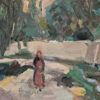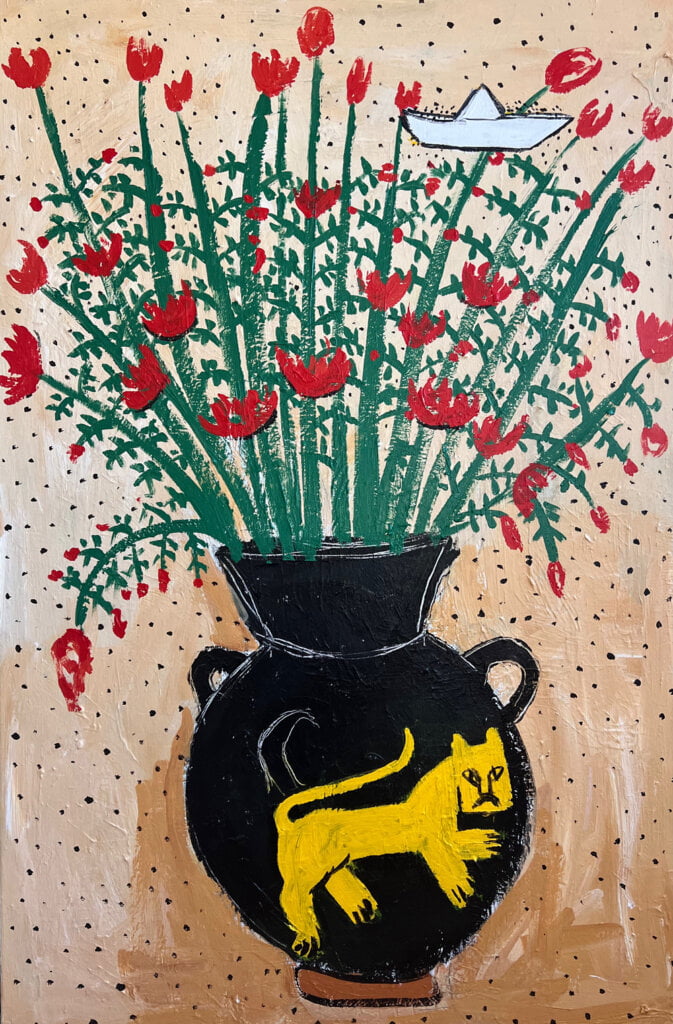Meron Engida Hawke: Hummingbird
May 16 – June 9, 2023
Morton Fine Art’s
Washington, D.C. location
(52 O St NW #302)
Hummingbird, an exhibition of mixed-media paintings and sculptures by artist Meron Engida Hawke. Made up of works from the artist’s series “Teff Teffa,” “Ashenda Girl” and “Highlander,” alongside still lifes in a muralist style, the exhibition tackles issues of migration, marginalization and resistance in contemporary Ethiopia.
The artist’s second solo show with the gallery, Hummingbird will be on view from May 16 – June 9, 2023 at Morton Fine Art’s Washington, D.C. location (52 O St NW #302).
A native of Addis Ababa now living in D.C., Meron Engida Hawke’s artwork explores Ethiopian identity, sustainable agriculture, labor relations and women’s issues in contemporary East Africa. Struck by how the perception abroad of Ethiopia and Africa is consistently framed through media stories of famine, climate crises and war, Engida Hawke explores these issues from the inside, generating subjects in her work that are both archetypal and specific, each of whom embodies the perspective of Ethiopian womanhood while proudly acknowledging the gaze of another.
Deftly weaving contemporary news items and personal interests into her portraits with a symbolist’s shorthand, the artist takes apart and rearranges stereotypical representations of Ethiopia while focusing on the beauty of the country’s traditions and cultures.
Heavily influenced by ancient Ethiopian art, Engida Hawke’s vibrant colors and crisp narrative subjects derive from the murals and religious paintings that populate the walls of Addis Ababa. Creating from memory and imagination and research into her subjects, the artist starts with a basic tableau that she gradually layers with tones, figures and symbolic metonyms. Her recent work involves the development of a mixed-media practice that layers Ethiopian woven fabric onto canvas—an innovation inspired by recent news of Ethiopian clothing being mass manufactured with synthetic materials.

Acrylic and wallpaper on canvas
Courtesy of the artist and Morton Fine Art
Engida Hawke’s inclusion of the handwoven fabric, as a testament to her heritage, shares pictorial space here with animals and pearls—part of the artist’s innate visual lexicon of innocence, forgiveness, elegance and justice. Weaving the weighted symbols of her native culture into increasingly disparate and secular works, Engida Hawke elaborates a narrative that telegraphs from the heart of Ethiopian identity into the cacophony of global media and international affairs.
In the artist’s “Teff Teffa” series, women practice the ancient rite of cultivating teff, a small grain used to make injera, the foundational flatbread of Ethiopian cuisine. The word teff comes from the Amharic teffa, meaning “lost”—a reference to the fact that the grain is so small that dropping one makes it impossible to find. Teff has been cultivated in Ethiopia for more than 6,000 years, a staple food for over 80 ethnic groups in the region and central part of Ethiopian national identity.
Today, teff has grown increasingly expensive to harvest and mill as a result of increasing global demand, as well as regional armed conflict and drought caused by climate change. Engida Hawke references the devastation of proverbial “lost teff” in her backgrounds, dotted with the miniscule seed, while in the foreground she addresses the social and environmental effects of flower farming—a newly inedible cash crop for the region—dependent on its export to Europe and the subservience of women’s labor across eastern Africa.
By contrast, Engida Hawke showcases the underrepresented side of the Ethiopian experience in her “Ashenda Girl” series by depicting women in moments of joy, freedom and righteous resistance. The series title references Ashenda, a colorful religious festival celebrated every August in northern Ethiopia by women and girls. Taking its name from a tall grass that is woven into skirts and worn for the duration of the three-day festival, the Ashenda girls also dress in traditional embroidered dresses, with fine jewelry and braided hair. The celebration is a joyous occasion of song and dance—an opportunity for the embrace of feminine self-expression.
The exhibition’s title, Hummingbird, comes from a story told by the late Kenyan activist Wangari Maathai, in which a hummingbird shows bravery by fighting a forest fire with only the water that can fit in its beak. The other animals, much larger and more capable, watch with a sense of futility while their habitat burns, but the hummingbird knows that every little bit helps.
Engida Hawke connects this story to her personal experience in addressing social and climate issues through her art, and has recently taken to including mixed-media hummingbirds in her mesmerizing compositions of women like her, representing the freedom of empowerment through knowledge.
https://www.instagram.com/meronengidahawke/
©2023 Meron Engida Hawke







